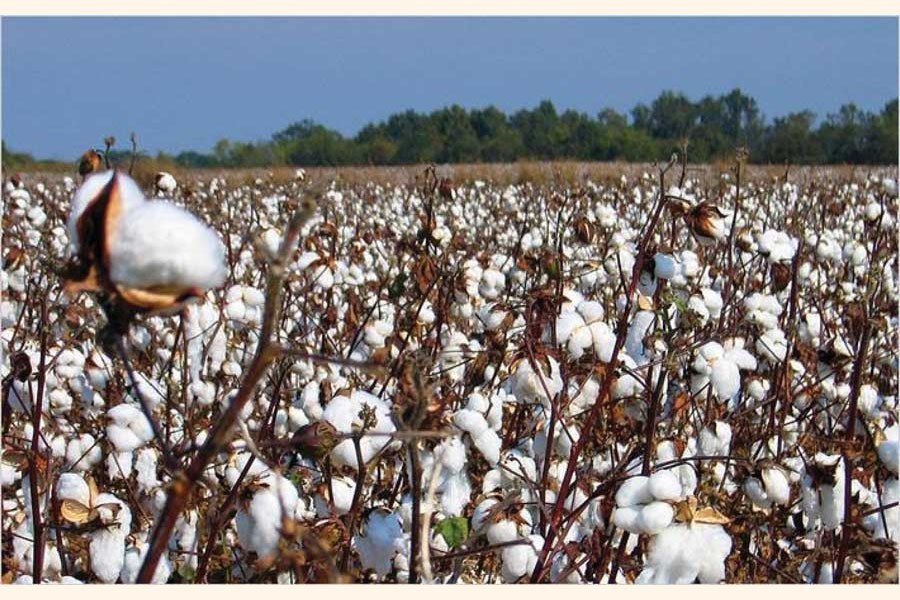Being a net importer of raw cotton, Bangladesh's robust textile and readymade garment (RMG) sector is obviously susceptible to any price change of this item in the international market. So, the recent developments in the global cotton market provide reasons for concern. As reported in the Tuesday's issue of this paper, the cotton price index has for the first time in a decade registered a rising trend in the global market. To be precise, it touched 107-point mark last month, whereas it was below 100-point in the previous (August) month. However, taking due note of cotton's price hike, textile industry leaders have meanwhile alerted the RMG operators of its possible knock-on effect on the fabric price. Especially, the overseas buyers need to be updated about the possible cost increase of the country's RMG products. As such, the matter has to be settled before the supply orders for the RMG items are finalised with the buyers. This is an imperative to avoid any last-minute misunderstanding between local garment producers and their international buyers.
Here is a point to note. Even if the current uptrend in the price of cotton in the international cotton market proves to be a short-term development that should not be any reason for taking the matter lightly. Side by side with further growth of the RMG sector, its products are also going to face a tougher competition in the international market. The reason is, with the country's graduation to a middle-income nation in 2026, the price of its RMG products will increase as some GSP-related tariff facilities that those (products) now enjoy from the EU market will then go. Moreover, to protect its turf, the RMG industry will have also to keep its product prices at a competitive level. But that would crucially depend on having a stable supply of cotton to keep its fabrics at a price that is well within predictability. But given cotton's present supply constraints, efforts will be required to ensure that there is an adequate stock of the raw material all the year round.
At this point, it would be worthwhile to look at the state of cotton's domestic production and supply at the moment. Last season, for example, 44, 450 hectares of land were brought under cotton cultivation, according to the Cotton Development Board (CDB). With its present capacity, Bangladesh can meet only 4.0 per cent of the total national demand including industrial consumption of cotton. In FY 2020-21, for example, Bangladesh imported 8.2 million bales of cotton, while according to (CDB)'s prediction, this year's domestic cotton production could be around 200,000 bales.
To be fair, there is not much scope for drastically increasing the level of domestic cotton production. And that is for the simple reason that Bangladesh's climate is not ideal for this particular crop as it grows better in dry countries. Even so, experts hold that the country's cotton production can be increased significantly through using better hybrid seeds as well as bringing more acreage under cultivation without affecting food crop production. That will definitely go to reduce the country's import dependence for cotton to a marked degree. Just to be on the safe side, in keeping with the increase in cotton's industrial consumption, Bangladesh will be required to further diversify the sources of this crucial raw material. That would be in addition to the existing suppliers.


